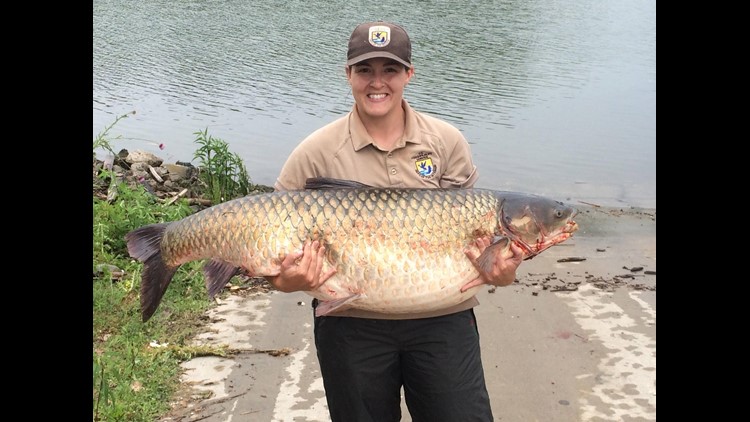(WTOL) - A genetic analysis conducted by the U.S. Geological Survey recently confirmed that newly-hatched fish collected from the Maumee River during the summer of 2018 are grass carp.
The USGS says grass carp are one species of invasive Asian carps that threaten the Great Lakes.
“If grass carp become abundant in Lake Erie, they could consume large amounts of aquatic vegetation, ultimately reducing habitat for native fish and other aquatic animals and diminishing food resources for waterbirds,” said USGS scientist Patrick Kocovsky. “The Lake Erie ecosystem is a major contributor to the Great Lakes’ multi-billion dollar per year fishery.”
The USGS says the samples of the fish they received for genetic confirmation were collected by a sampling crew from the University of Toledo in June of last year.
USGS scientists extracted DNA from each larva in February and “confirmed with high confidence” that the species of every hatchling collected was grass carp. The samples were collected near the I-280 bridge in Toledo and near the river mouth adjacent to Brenner’s Marina during high water flow events typical of spawning conditions for grass carp.
“Collecting larval fish in a Great Lake is like finding a needle in a haystack,” said Christine Mayer of The University of Toledo Department of Environmental Sciences and Lake Erie Center. “Our finding helps make the haystack smaller when looking for spawning grass carp.”
The finding of these grass carp confirms previous evidence that they spawn in the Maumee River, according to the USGS. The capture of the newly-hatched fish during separate high flow events confirms the possibility of more than one successful spawning event within a year.
The USGS and the University of Toledo has previously found grass crap spawning in the Sandusky River, as well.



